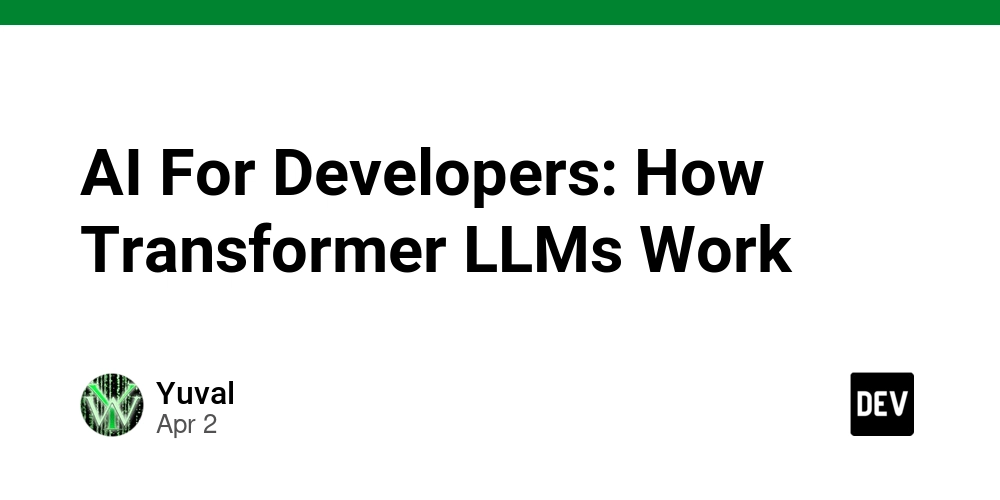Dev
1d
364

Image Credit: Dev
AI For Developers: How Transformer LLMs Work
- When dealing with language models, understanding how words are represented as numeric values is essential. This evolution includes methods like Bag of Words and Word2Vec for word representation.
- Word2Vec captures word meaning through neural networks, creating embeddings that cluster words with similar meanings together.
- RNNs process sequences like sentences, with an encoder-decoder setup used for translation tasks.
- Attention mechanisms allow models to focus on relevant parts of input, enhancing translation and text generation.
- Transformers, introduced in 2017, rely on attention and parallel processing, improving training speed.
- BERT, a popular model, focuses on contextualized word embeddings, beneficial for tasks like classification.
- Tokenization methods, like BERT's and GPT-4's tokenizers, impact model performance and vocabulary size.
- Transformer LLMs comprise Tokenizers, Transformer Blocks stacks, and Language Modeling Heads for text generation.
- Self-attention layers enhance contextual understanding by combining information from previous tokens.
- Recent improvements include Rotary Embeddings for positional encoding efficiency and Mixture of Experts for token-related specialization.
- Mixture of Experts optimizes token processing with different domain-specific expert neural networks.
Read Full Article
21 Likes
For uninterrupted reading, download the app